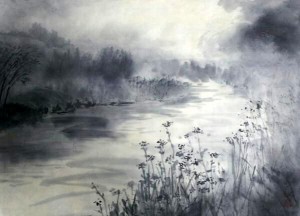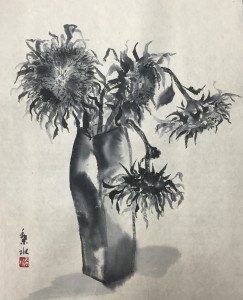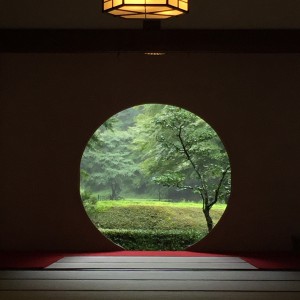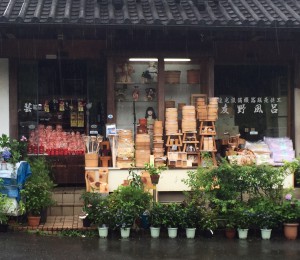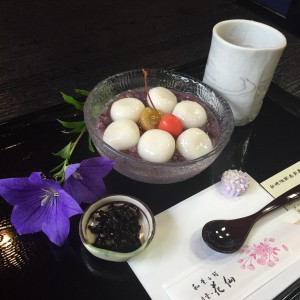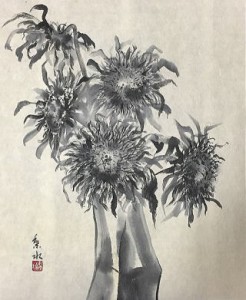書にはたくさんのルールがあります。まず、字の形が決まっています。楷書、行書、草書、隷書、仮名など、1つの文字にいくつものくずし方や形があるので、覚えるだけでも大変です。その上、書く文章と字の時代が合っていないといけないというルールもあります。また、漢詩や和歌など文学を知らなければ題材を選ぶことすらできません。つまり、とても窮屈なのです。墨絵の自由度とは比べものになりません。しかし、その窮屈なルールをクリアしながら紙の上に何かを表現する面白さが書にはあるのです。クセになる面白さです。
今日書いたのは、「海雀」という北原白秋の詩です。毎月集まっている勉強会の次の課題です。この短い詩の中には「海雀」と言う言葉が6回も出てきます。「波」も2回。「銀の点点」も2回出てきます。こんな風に同じ字が何度も出て来るものは大変難しいのです。同じ字を全部違えて書かなくては、ただのお習字になってしまいます。これができるまでに30枚以上は書きましたが、なんとか面白く書けたかな。
実は、私は海雀がどんな鳥なのか知らなかっのです。何となく千鳥のような小さな鳥をイメージしていましたので、最初は横に細長い紙に海雀を小さく書いていました。ところが、ネットで画像を見てみたら、海雀は可笑しな顔をした鴎のような鳥だったのです。それで、紙の形も変え、字も大きくして書きました。それで、こんな風に出来上がったのです。波の間に間に姿が見え隠れする海雀の感じが伝わりましたでしょうか。
Calligraphy has many rules. Each kanji has some shapes such as Kaisho, Gyousho, Sousho, Kana, they are quite different and it’s not easy to remember all of them. Moreover, the knowledge of Japanese literature and Chinese poetry is needed to choose them for a subject. So calligraphy is constrained by cultural elements that cannot be compared with Sumi-e which has a lot of flexibility. All the more reason, it is interesting to express something on the paper. It is really exciting.
What I drew today is a poetry of Hakushu Kitahara ‘Umi-suzume (murrelets)’. This is a subject of next month’s study meeting. In this short poetry, there are six 海雀/murrelets, two 波/waves and 銀の点点/silver dots. It is very difficult to draw such type of poetry because we have to draw the same kanji with different shapes. Or it cannot be an art work but just a Shuji/practice. I dew more than 30 patterns before this one. I wonder if I could draw an interesting one.
In fact, I didn’t know what kind of bird murrelet is. When I first read this poetry, I imagined it was a small bird like a plover, so I drew the Kanji of 海雀 much smaller on the horizontally long paper. But one day I saw them on the internet, they were much bigger, as big as seagulls and had a funny face. Then I changed the shape of paper and I drew them bigger. I hope that you see them coming and going among the waves.

